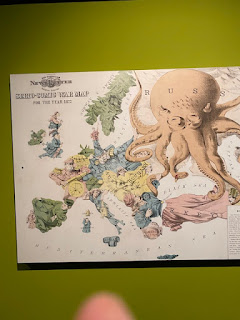But Putin is certainly not alone when it comes hating and killing for Jesus. Ever since the Church took secular power in the late 400s AD, killing and conquering in the name of the Prince of Peace has stained every century for the past millennia. It's worth noting for those who rationalize armed Christianity, Jesus was a penniless Jew who told his followers not to love or even care about this world, even to hate their father and mother and pursue the Kingdom of God.
The worst of murderous Christianity in America was certainly when eleven states rebelled with the express purpose of keeping men and women in chains for life. Sometimes the slavers even told those they oppressed about Jesus: as strong a declaration as could ever be made that their victims deserved love and were handed hate.
Every organized patriarchal religion with power uses that power to advance its own beliefs. For some religions, killing heretics, invading neighbors and other expressions of secular power can be reconciled with the traditions of the faith. Jews can defend Israel. Muslims have a mandate to create a caliphate.
I have read every word of the New Testament in several translations and a lot of it in the Greek in which it was written. There is no way to twist the words of Jesus into an invasion or a Crusade. A Buddhist government has the same flat contradiction. I have read a lot about the Buddha and his beliefs and life. No one created a Buddhist army reading Buddha.
Every day the world hears about how the "Christian" Vladimir Putin bombs, blasts and murders the mostly Christian people of Ukraine. Right now, the bad religion of Vladimir Putin, his twisted version of Christianity, is killing innocent people in Ukraine.


































